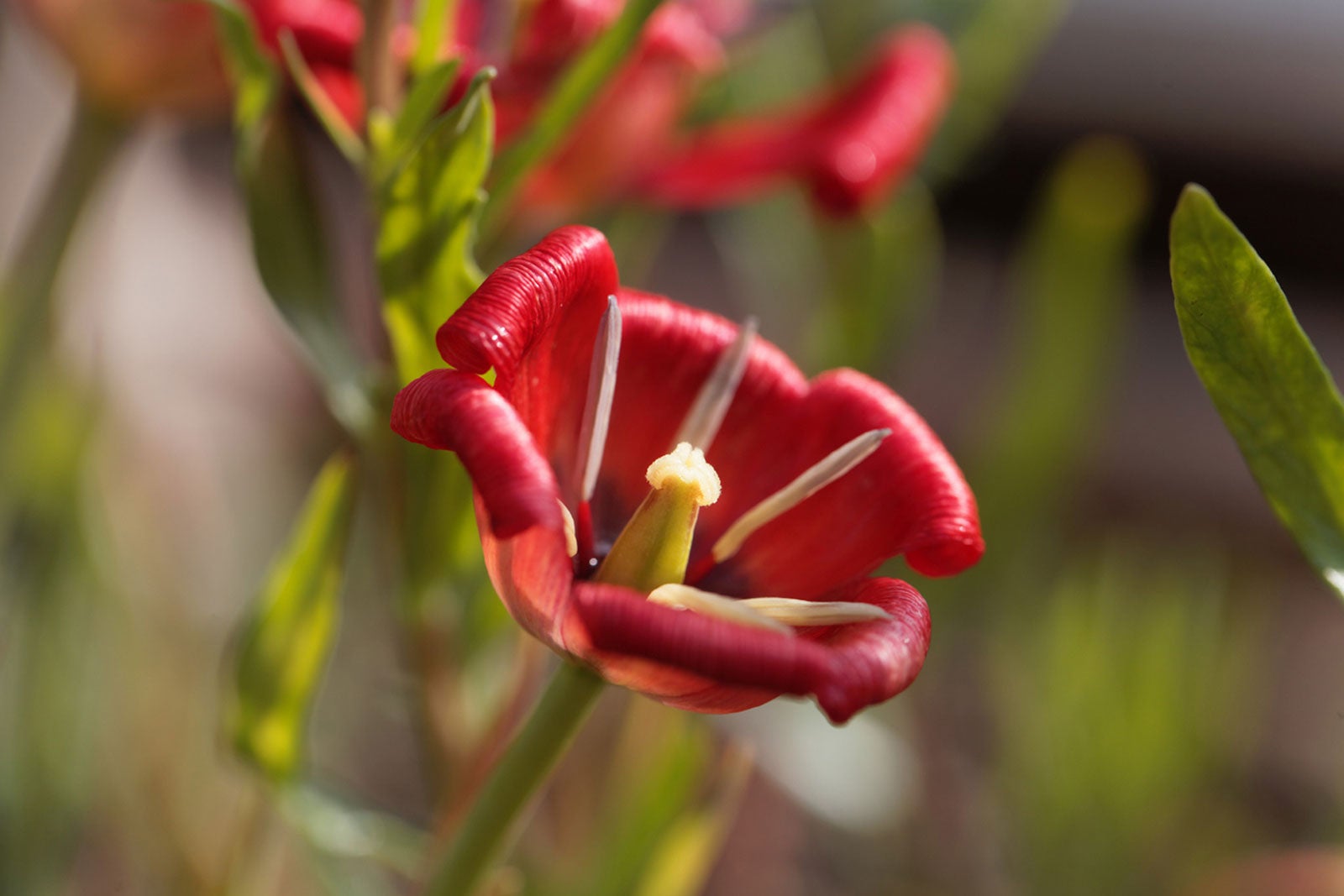Species Tulip Information – How To Grow Varieties Of Species Tulips


If you have never heard of them before, some species tulip information will get you started growing these unique flowers. Different from the typical hybrid tulips with which most gardeners are familiar, species tulips are smaller, grow in rocky soils, and can actually naturalize in your garden under the right conditions.
What are Species Tulips?
Most tulips you’ll find for the garden are hybrids. Species tulips are un-hybridized and have only recently become more widely available to gardeners. So how are species tulips different from hybrid tulips? There are several important distinctions:
- Species tulips are smaller than hybrids.
- The foliage of species tulips is more varied and interesting.
- Species tulips are more perennial.
- They produce multiple blooms per stem.
- They will naturalize and spread in warm climates.
Varieties of Species Tulips
There are several varieties of species tulips that will give you a range of colors, foliage, and height for your beds or rock gardens:
- Lady Tulip (Tulipa clusiana): This species tulip produces gorgeous, unique flowers that are pink on the outside and white on the inside with a red or purple star in the center.
- Red Cross Tulip (Tulipa pulchella): Growing to just 3 to 5 inches (8-13 cm.) tall, this diminutive tulip produces purple spring blooms.
- Late Tulip (Tulipa tarda): Another tiny plant, this one produces star-shaped flowers in brilliant yellow with white tips.
- Flax-Leaved Tulip (Tulipa linifolia): The flowers of this tulip are bright red, narrow, and pointed.
- Candia Tulip (Tulipa saxatillis): Choose this one for a flower that naturalizes readily. The flowers are yellow at the base with lavender petals.
- Unicom (Tulipa praestans ‘Unicum’): This is a variety with unique, variegated foliage. The flowers are bright orange.
- Garden Tulip (Tulipa acuminate): The flowers of this tulip have long, narrow, pointed petals that are mostly yellow with bright red stripes.
- Turkestan Tulip (Tulipa turkestanica): This plant produces creamy, white flowers, three to five per stem.
Growing Species Tulips
Although they are pretty tough, when growing species tulips, they do have some specific condition needs.
Soil must drain very well. Rocky soil is best. Amend your soil, if necessary, by adding sand or gravel. The location should get full sun.
Plant bulbs as you would with hybrid tulips, to a depth of 5 to 8 inches (13-20 cm.) and about 6 inches (15 cm.) apart.
After the flowers have bloomed, let the foliage stay in place for about six weeks before cutting back. If you want the tulips to naturalize or spread out to fill a bed, avoid deadheading flowers and leave them in place.
Gardening tips, videos, info and more delivered right to your inbox!
Sign up for the Gardening Know How newsletter today and receive a free copy of our e-book "How to Grow Delicious Tomatoes".

Mary Ellen Ellis has been gardening for over 20 years. With degrees in Chemistry and Biology, Mary Ellen's specialties are flowers, native plants, and herbs.
-
 Looking For Plants To Give You The Soft And Fuzzies? Try These 5 Fuzzy Leaf Plant Options
Looking For Plants To Give You The Soft And Fuzzies? Try These 5 Fuzzy Leaf Plant OptionsLovers of texture, drama, silver foliage and tactile plants will adore these special sensory garden additions. These fuzzy leaf plant options will leave you all aglow
By Susan Albert
-
 Get Ready For A Summer Of Hummers! Grow These Full Sun Hummingbird Plants and Flowers
Get Ready For A Summer Of Hummers! Grow These Full Sun Hummingbird Plants and FlowersIf you’re lucky enough to enjoy a sunny backyard, make sure you are maxing out on your pollinator opportunities and grow these full sun hummingbird plants and flowers
By Tonya Barnett